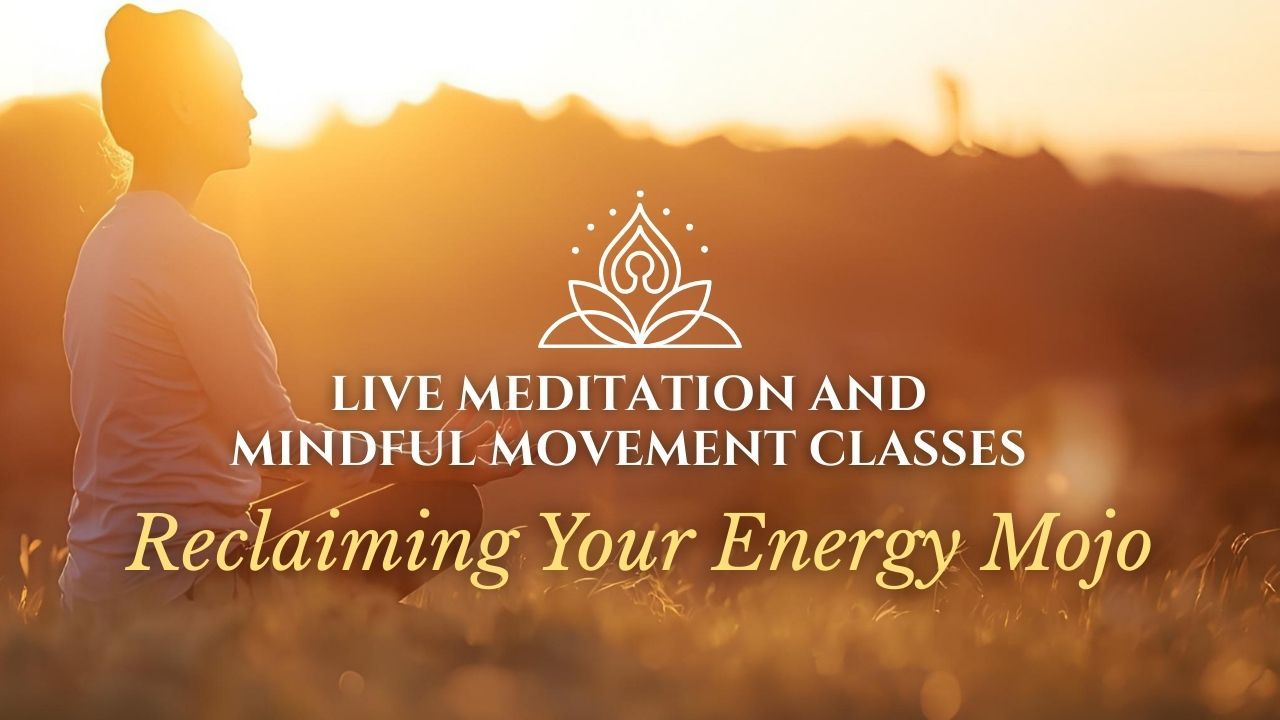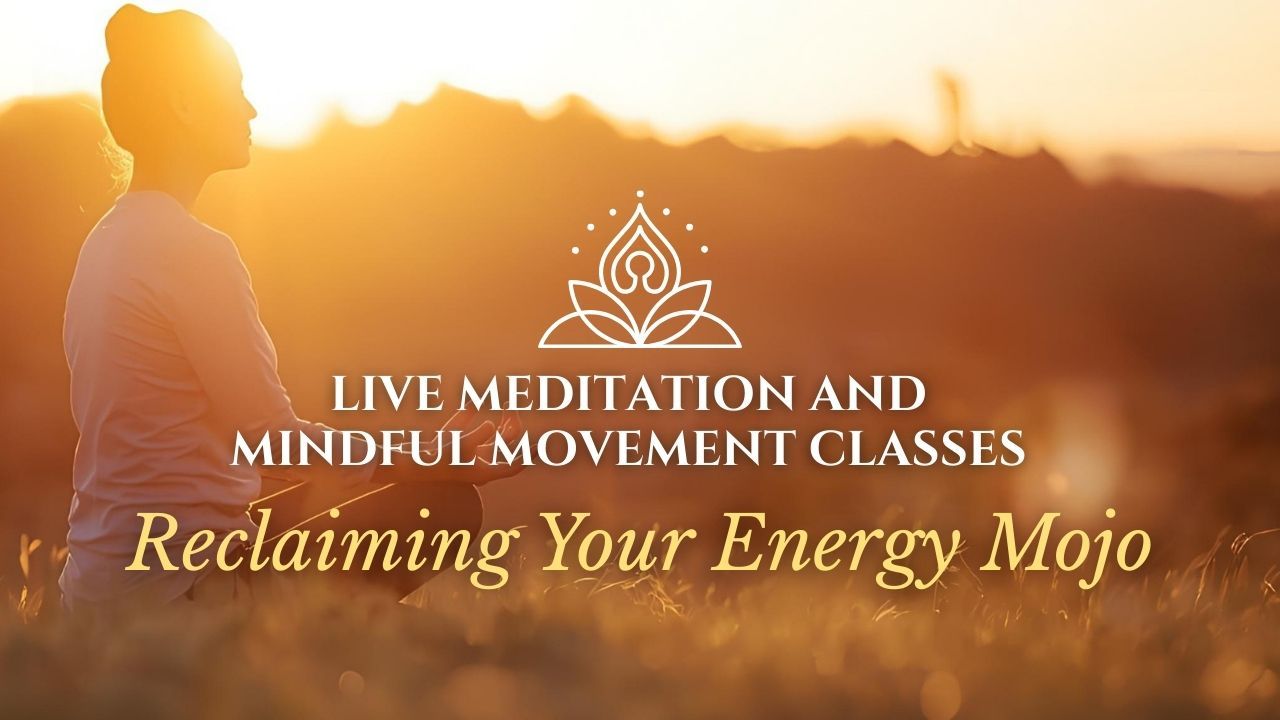What is a Contemplation Practice?
Oct 06, 2021One of the big questions I’m asked when I have a client that is looking to start or expand their Spiritual Growth and Empowerment Path is, “What are the differences between all the different types of “practices” out there and what would be best for me?”
For example – what is the difference between:
- Mindfulness Skills
- Meditation
- Guided Meditations
- Guided Journeys
- Prayer
- Contemplation
- Yoga
- Breath Work
- Mindful Movement
- Transcendental Meditation
- And the list goes on and on ☺
You might have even seen this image before:

To help my clients know where to start, I like to invite them into exploring a couple of questions first:
- I ask them to open to an awareness of WHERE they are at in their journey – are they just starting out, been working their way through a couple of different types of practices, super experienced but feel they have hit a plateau in their practices.
- WHAT they are looking to cultivate within their systems,
- Learning how to become aware of the physical body.
- Looking to start to develop mind management (and therefore stress management) skills.
- Looking to develop or deepen their ability to sense, hear, see, or know more about their full self – physical, emotional, mental, spiritual.
- Looking to expand their relationship with their soul’s voice and purpose.
- Looking to deepen their relationship with others, all, the cosmos, and/or the divine.
- Wanting to strengthen the dialog with the different parts of themselves from an expanded point of view
- And so on
- Then, I also ask them to explore HOW much are they willing to surrender into allowing the practice to INFORM their actions? And if so, what stage are they at in their relationship with Trust, Respect, and Willingness (the first three pillars in my system of the Bridge of Connection™)
The answer to these questions will help guide you with where to start and what evolution your practices might take as you work your way to exploring the ever-shifting answers to these questions.
Here is a super-quick guide to the main purposes of the different types of practices out there:
- Mindfulness is basically a tool for mind management. Modern-day mindfulness practices take the neurodevelopment skills from a more wisdom tradition-based meditation practice and bring forward secular (meaning non-religious) exercises for developing the mind’s ability to being actually present at that moment. Mindfulness exercises are designed to help you build pathways to break through the mental chatter that is pulling you out of the here and now. A mindfulness practice, skills, and techniques help to create a wedge of awareness to break through the mental constructs and habits that pull us out of being in our daily life and give us an opportunity to BE active in what we are doing so that we can get off auto-pilot and have the capacity to choose and respond versus reacting to our present time based off of old tapes.
- The Umbrella Term Meditation in modern terms is defined in Wikipedia as “A practice where an individual uses a technique – such as mindfulness or focusing the mind on a particular object, thought, or activity – to train attention and awareness, and the goal of meditation is to achieve mental clarity and emotionally calm and stable states.”
The traditional definition of Meditation is a means of transforming the mind. Meditation really can be traced back to the different wisdom and non-secular traditions. For example, Buddhist meditation practices are techniques that encourage and develop concentration, clarity, emotional positivity and a calm seeing of the true nature of things. Such experiences can lead to a transformative effect and to a new understanding of life i.e enlightenment. Two basic meditations most traditions teach are Meditations of Breathing and Metta Bhavana (Loving-Kindness)
You can keep going to the other traditions as well. Dhyana, in Hinduism, means contemplation and meditation. It is, in Hinduism, a part of a self-directed awareness and unifying Yoga processes by which the yogi realizes Self (Atman, soul), one's relationship with other living beings, and Ultimate Reality.
Vedic Meditation is a technique that traces its roots to the Vedas, ancient Indian texts that are the foundation for yoga and Ayurveda principles and practices. Unlike Buddhist techniques such as Metta Bhavana (Loving-Kindness), the Vedic Meditations don’t involve contemplation or trying to think compassionate thoughts. Instead, the Vedic approach uses a mantra (a sound and chant) that is used to settle the mind. In this version of meditation chanting a mantra, it is believed to be a powerful tool for cultivating calm and deep focus to help you become more peaceful, clear, and insightful.
Christian Meditation, takes a reciting prayer or a reading from a scripture and adds in contemplation and sitting with it in silence and reflection.
- Modern Contemplation for me is a mix of the above WITH a willingness to open and surrender to deep reflection, dialog, and commune with a phrase, prayer, sacred text, your inner wisdom, and guidance that comes from your heart space. It is a willingness to allow your defenses to stand down so that you can open to insights that come from a “higher” perspective. In a contemplation practice, you open to sensing, hearing, perceiving, and knowing on a deeper level the hidden messages that are trying to come forward from your soul and the Divine and therefore are free from the limiting beliefs and old tapes that are holding you out of alignment with your true nature.
A contemplation practice can be added to ANY practice – mindfulness, breathwork, movement practices, meditation, and so on. What makes it a contemplation practice is allowing yourself to include guidance and requests for actions that often require us to change our thoughts, habits, behaviors, and interaction patterns.
I believe the key to really allowing the benefits of ANY of these practices to fully come forward is a willingness to bring forward committed actions that match the insights you gain during them. If you want the full benefit of ANY practice, this is a KEY part of your practice. Otherwise, you are having a great experience that might have some benefits, however, not lasting evolving transformational benefits.
You know me! I LOVE the Action Steps, so let’s dive in!
Reflection and Contemplation Exercise: Journal or do a meditation (walking or sitting) on the following questions.
Oh and leave shame, blame, and self-judging at the doorstep of this exercise – you can’t change what you don’t know and we don’t do anything for just giggles. We ALL have room to grow, expand, and empower ourselves to the next level. So be kind and compassionate with yourself for where you have been, where you are, and where you are going because like Ram Dass says, “We are all just walking each other home.” Okay, proceed now! 😊
- What do you DO with the insights, expanded awareness, and so on that come during your practices?
- Do you allow your practices to show you where you are and where you are not in alignment with any insights or enlightenment that you obtained with your daily actions, thoughts, and choices? OR do you tend to move back into your daily routines based on autopilot of habits without being informed and making adjustments to your habits based on your practices?
- Do you allow the Divine to speak with you, through you, and share guidance with you?
- Do you allow your mind to rest and step aside so that your heart can speak, share, and support you?
For me, a contemplation practice allows me to see into the shadows (the unconscious and subconscious drivers behind my actions and thoughts so that I can understand where I am in alignment and where I am losing my power to past pains, limiting beliefs, habits, and coping skills that are no longer serving me.
For me, a contemplation practice allows me to unburden my system and step into a choice, empowerment, and committed actions that match my soul’s values.
If you haven’t already, check out my October episode of Connecting with Joy where I go even further into how to start and deepening a reflection and contemplation practice so that you can really maximize the benefits from it. I also have a free gift in Episode 19 that includes 21 Meditation and Contemplation Prompt videos and PDF to help jump start your contemplation practice today so check it out!
Click here to register so you can listen for free during the month of October and also claim the free gift of my Meditation and Contemplation Series
Finding this blog after the month of October 2021?
- No worries! If you are a member of the Connecting with Joy Unlimited level, login and look for Episode 19 in the archives.
- Not a member? No worries as well! You can join our Unlimited membership level at any time gain access to the entire library of the Podcast PLUS tons of awesome bonus items such as monthly LIVE Q&A and healing session group calls and a full bonus course on transformation ☺ Click here to see all the details and sign up!



